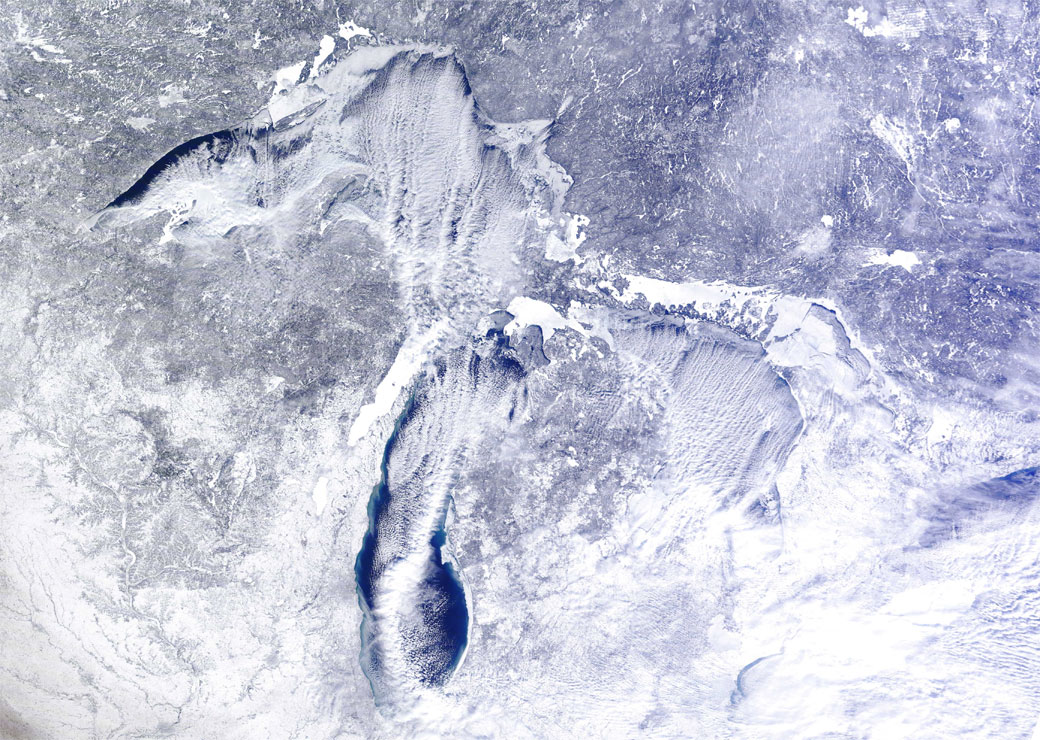TORONTO – The Great Lakes are seeing more ice coverage than they have in years, and this means big challenges for the shipping industry.

“It’s probably been the toughest winter we’ve had in about 24 years,” Robert Lewis-Manning, President of the Canadian Shipowners’ Association told Global News.
“I think the speed at which the lakes froze this year, and not just the lakes but right up to the St. Lawrence River…was very, very early.”
According to George Leshkevich, a physical scientist with the Great Lakes Environmental Research Laboratory‘s National Ice Center, instead of a mid-December start to the freeze, the lakes began freezing around Nov. 25.
“We had an early start to the ice season, owing to the cold temperatures in the late fall and early winter,” Leshkevich told Global News. “Then we got the polar vortex and that just fuelled the fire, so to speak.”
Lewis-Manning said that it had become apparent to those who use the Great Lakes to ship that the season was going to experience a higher buildup of ice than it had seen in recent years, and that businesses were busy preparing to ship what they could early.
As the ice built up, it became a laborious process to ship goods.
“Ships are accustomed to sailing in ice,” said Lewis-Manning. “But it got to the point where ships had to be escorted in convoys by both the U.S. Coast Guard and the Canadian Coast Guard, so that’s really when the whole system slows down considerably because you have to get in lineups to go anywhere.”
He said that instead of a trip that would take a few hours, like on the St. Claire River, it has taken almost seven days to wait for a convoy and ice-breaking escort.
As for an exact economic cost, Leshkevich said it’s difficult to say at this point.
“We’ve lost literally hundreds of days sailing time in a period of two months. Not only is there a significant challenge to the shipping industry, but all the industries we support.”
Lake Erie is the Great Lake with the greatest mean concentration of ice, with more then 95 per cent of it covered.
Erie is the shallowest Great Lake, with an average depth of just 19 metres, causing it to lose most of its heat. Still, the last time it was almost 100 per cent covered was in February 1996.
As of Jan. 31, Lake Superior had an ice concentration of 73 per cent. The last time Lake Superior — the largest and deepest of the Great Lakes — saw nearly 100 per cent ice coverage was in early March of 1996. And if the cold temperatures continue, it’s likely to reach that sooner rather than later.
Lake Michigan is only 43 per cent covered; Lake Huron is 69 per cent. Lake Ontario is just 21 per cent covered. The greatest coverage in their records for Lake Ontario was 86 per cent in 1979.
“Compared to recent years, there’s a lot of ice,” said Leshkevich. “But compared to winters in the 1970s and 1980s it’s not that abnormal.”
Leshkevich said that only time will tell if the build-up of ice will continue. But for the shipping industry, the thaw couldn’t come soon enough.










Comments